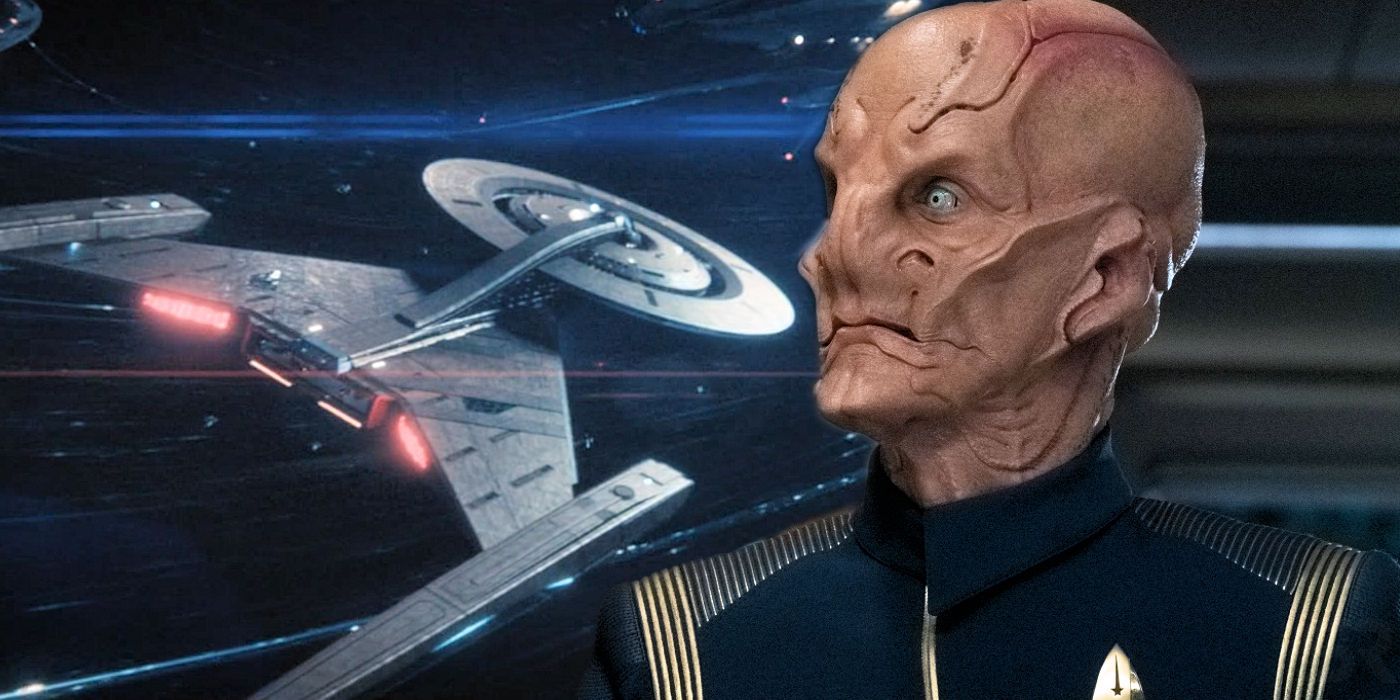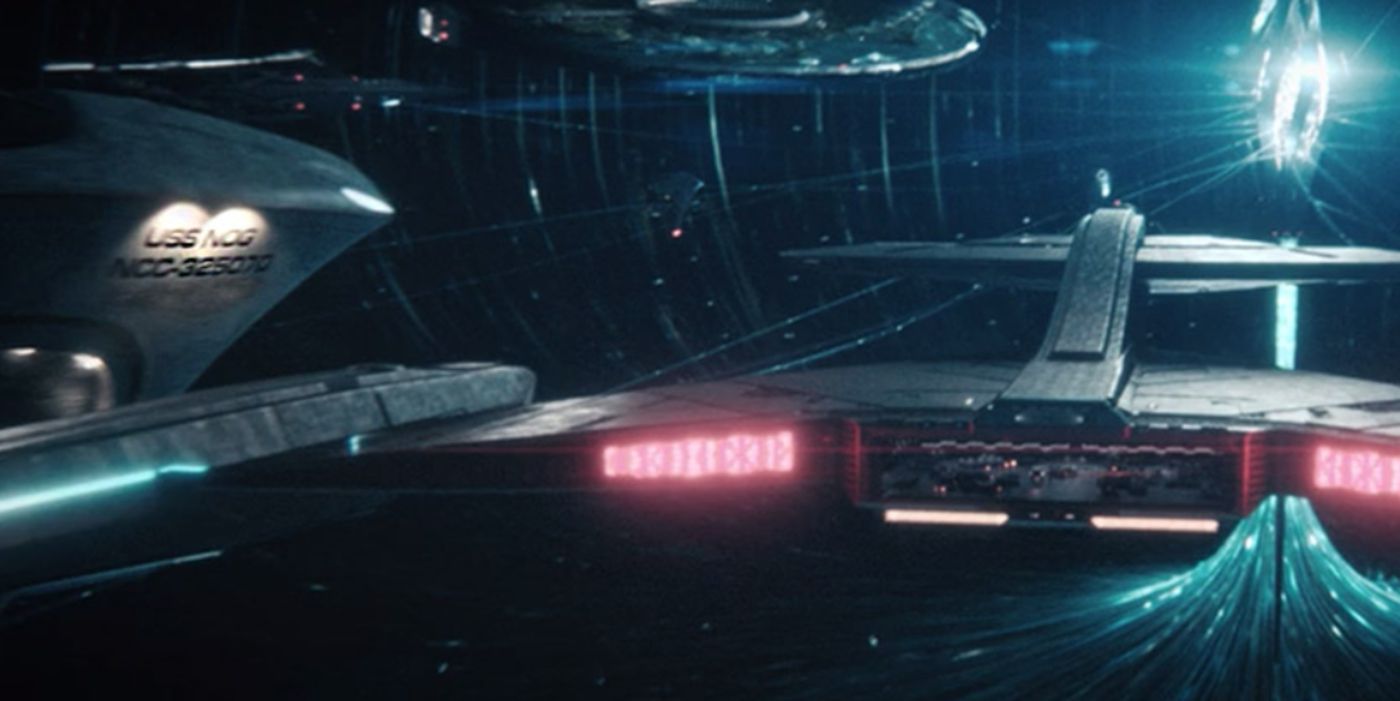Star Trek: Discovery is now the biggest show in the franchise, thanks to how it incorporates and honors the legacies of the Star Trek series that came before it. When it launched in 2017, Star Trek: Discovery was a 23rd-century prequel set a decade before Star Trek: The Original Series that many fans dismissed for how it disrupted established canon and the way it deviated from prior Star Trek TV presentations. But now that season 3 is exploring Star Trek's future era circa 3189, Star Trek: Discovery is clearly the flagship leading the way for the Star Trek universe on CBS All-Access.
Visually and stylistically, Star Trek: Discovery has far more in common with the J.J. Abrams Star Trek movie reboot trilogy, and the show took on the daunting task of modernizing Star Trek for the Peak TV era. But in this way, Star Trek: Discovery was kindred to Star Trek: Deep Space Nine, which broke the established and highly successful TOS and Star Trek: The Next Generation episodic formula to deliver a more serialized, complex, and character-based saga - one that plays as intriguingly today as it did in the 1990s. Star Trek: Discovery took bold chances with a few missteps in season 1 but, in season 2, the addition of classic characters Captain Christopher Pike (Anson Mount), Spock (Ethan Peck), and Number One (Rebecca Romijn) excited fans and helped create a superior adventure with just the right amount of callbacks and references. Still, Star Trek: Discovery was hampered by being a prequel - a problem the series ingeniously solved by leaping 930 years into the future, beyond all established canon.
Star Trek: Discovery season 3 is now writing the new canon but it also proudly carries its heritage with it. Even better, Star Trek: Discovery season 3 has begun honoring both DS9 (with the addition of Trill characters) and Star Trek: Voyager so that the two TNG sequel shows are finally getting their overdue recognition for how vital and influential they are to the franchise. Star Trek: Discovery season 3, episode 5, "Die Trying" showed the 32nd-century incarnation of Captain Katheryn Janeway's (Kate Mulgrew) starship, the U.S.S. Voyager-J, which implies that it could see action as season 3 progresses. And, in a blink-and-you'll-miss-it cameo, the U.S.S. Discovery also cruised past another starship, the U.S.S. Nog, which honors DS9's first Ferengi in Starfleet, who was played by the late Aron Eisenberg. The message is clear: Star Trek: Discovery is Star Trek now, but everything that came before counts and is in play in the 32nd century as needed.
Trekkers rejoiced when Star Trek: Picard joined the CBS Trek franchise and, while it did bring back the TNG fandom who wanted a dose of nostalgia, the series about Jean-Luc Picard (Patrick Stewart) was not at all like Star Trek: The Next Generation by design, which some fans found disorienting. Star Trek: Picard wasn't set on a Starfleet ship and it's about an eclectic cast of misfits including Seven of Nine (Jeri Ryan), which is a dream team-up of the most popular TNG and Voyager icons. But TNG guest stars aside, Star Trek: Picard feels more like an outlier show, and not the true center of the Star Trek franchise despite being about Picard.
After Abrams rebooted Kirk and Spock in an alternate timeline and then Star Trek: Discovery launched in the 23rd century, DS9 and Voyager just didn't get a lot a franchise love for years and both felt forgotten outside of the occasional Easter egg. Even Star Trek: Enterprise got more attention since, as the earliest prequel, it had canonical elements Discovery and Abrams' films could draw from. However, that tide has happily been changing; Star Trek: Lower Decks joyously references all aspects of Star Trek including DS9 and Voyager, although, as an animated comedy series, it isn't held in quite the same regard or seen as true canon by many Trekkers.
There was a fear that jumping 930 years into the future would further divorce Star Trek: Discovery from the mainline franchise but, instead, Disco has truly assumed the role of the flagship of optimism that is leading the way and bringing all of the past Star Trek with it in the new final frontier. The U.S.S. Nog isn't just a shoutout; it means that the beloved DS9 character became so important in-universe that a starship was named after him as the ultimate honor. The possibility now exists that the Voyager-J and the Nog will soon see action and fight alongside Discovery, a symbolic melding of Star Trek shows that were once looked down upon but are now recognized for how important they are to the franchise and to fans. This makes Star Trek: Discovery the biggest and most important modern Star Trek show and the sky's the limit of how far it will all go.


